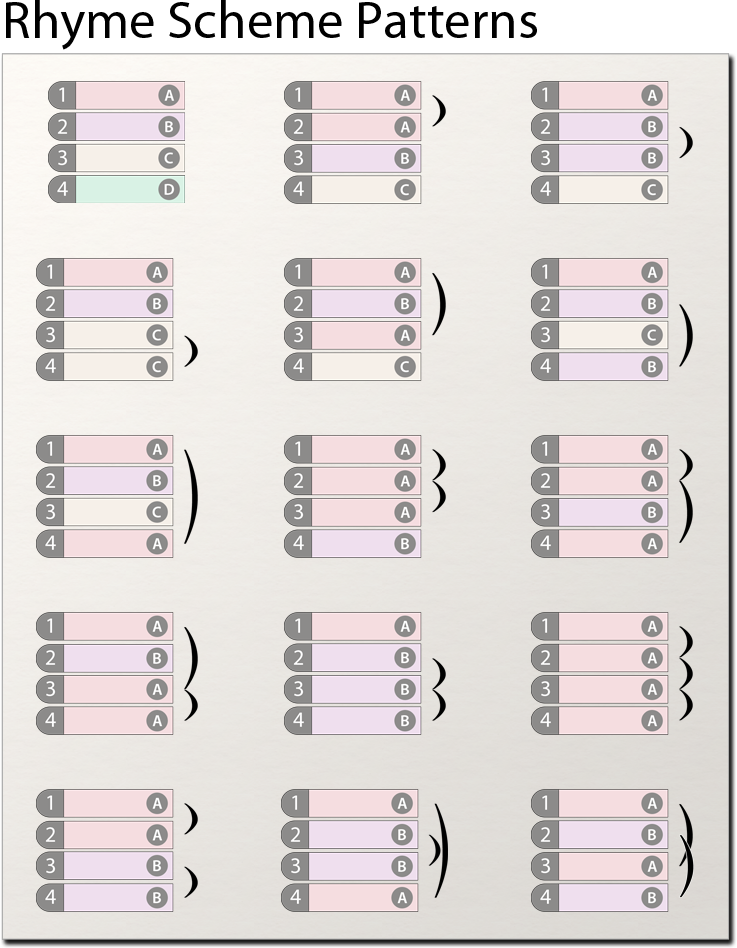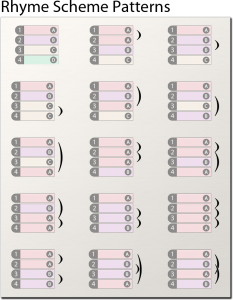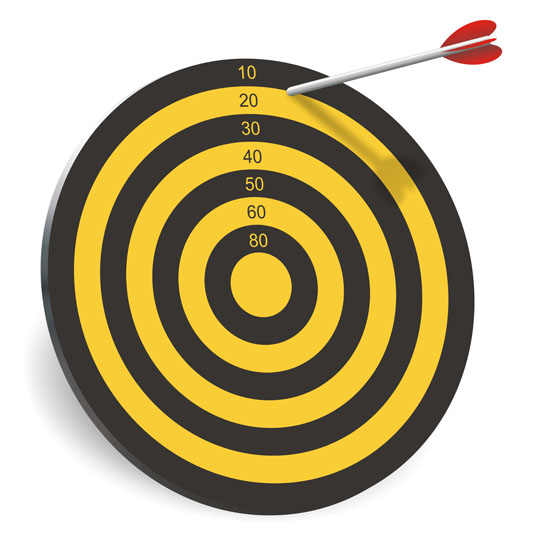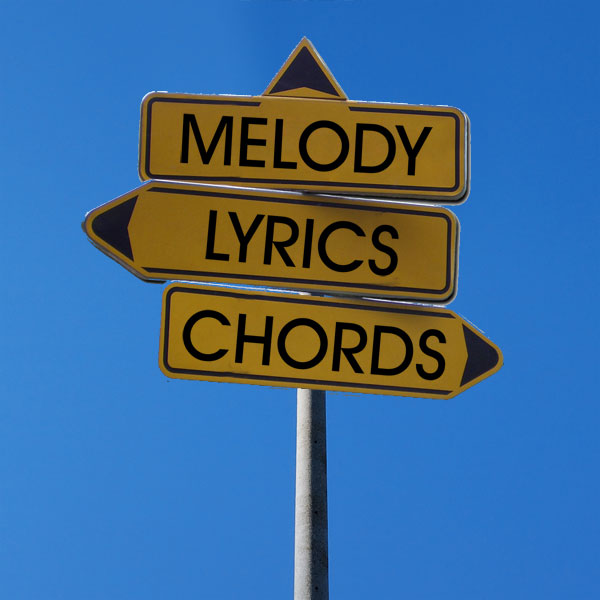Making Song Lyrics Rhyme

For those of you who like to write songs where the lyrics rhyme, here’s a term you should be familiar with. ‘Rhyme scheme‘ refers to where the rhyming words occur in a verse or a chorus. When writing songs it is a good idea to make song lyric rhyme.

Song Lyrics Rhyme Scheme Patterns
Rhyme schemes are simply the pattern of rhymes within a stanza. The rhyme pattern in each verse should match other following verses in the song. But this pattern does not have to be the same in the chorus or bridge. It is usually best to be different than the verses. Songs do not have to rhyme, but the vast majority of successful songs do rhyme.
Different Types of Rhyme Schemes
While it’s not important that you know all of the different types of rhyme schemes (or the names of all the different kinds of rhymes, for that matter) it is important that you know how to use them. For example, if your first verse has lines 1 and three rhyming at the end as well as line 2 and 4 rhyming at the end, you have set up a rhyme scheme that should continue in the rest of the verses.
One of the most common rhyme schemes for segments of the song that contains four lines is to rhyme at the end of line 2 and 4. You can also rhyme line lines 1 and 2, and then 3 and four, although this scheme is not used as frequently.
Perfect of Near Rhyme Schemes
Rhymes are generally categorized as “perfect” or “near.” A perfect rhyme is not the best rhyme; the name just refers to the way it is. For instance, the two words “mind” and “find” are considered perfect rhymes. The consonants following the rhymed vowel (in this case I) are the same. The two words “find” and “line” are considered “near rhymes because the consonants after the rhymed vowel are different.
Be Consistent With Rhyme Schemes
One of the most effective things you can do as a lyricist is to employ not only a consistent rhyme scheme throughout your verses, but to also use the same type of rhymes (i.e., if you used masculine rhymes in the first verse, you masculine rhymes in the second.)
Tools For Creating Rhyme Schemes
One of the tools that you can use for help in crafting the lyrics for your songs is a device known as a rhyming dictionary. A rhyming dictionary works exactly the same as a regular dictionary, except that instead of giving you the definition/spelling of the word, it gives you a list of all the words that rhyme. Rhyming dictionaries can be found at most bookstores.
Do Some Research
Find some hit songs that fit your style and examine what it is that makes them a “hit.” What is the rhyme scheme (or does it even rhyme)? How are the choruses different from the verses? As you write more songs, you will start to listen to other songs more critically. You will be able to examine every instrument and its role in the song.
Make Rhyme Schemes Sound Natural
While all songs do not rhyme, the vast majority of really successful songs do. Consider using this wonderful tool to aid your songs. Take caution though because cliche, boring, predictable rhymes can ruin any song. Often a new writer gets so tied up in rhyming that the rhymes force the song to use words that sound like the words were picked simply because they rhymed, not because they helped the song. Don’t get discouraged. Like anything, writing good songs takes practice and some effort. A rhyme works best when it seems like it was an accident that words rhymed, and the lyrics are so fresh that the rhyming isn’t even noticed, the song just has that “effect” of all fitting together somehow and rhymes were a part of that. Rhymes should not be in the way; they should be like the icing on the cake that made it taste better.
Never Force a Rhyme
Often songwriters will write a terrific line, maybe use a wonderful metaphor or some words or phrases that are very vivid. Then they get caught trying to write another line that will rhyme to it. Often that line sounds like it’s “rhyme forced” meaning that it’s there mainly to rhyme to the previous line. Don’t let rhymes dictate your writing, let the story, or message of the song dictate them.
The first line or two should hook the listener into wanting to hear what comes next. People will be able to hum the melody after hearing it a few times. The lyric is conversational. No forced rhymes, no convoluted phrases or sentences. Today, you do not need to have perfect (care, bear) type rhymes. Meaning is more important.






These are very reasonable and helpful tips to help both new songwriters or veteran songwriters.
Thank you!